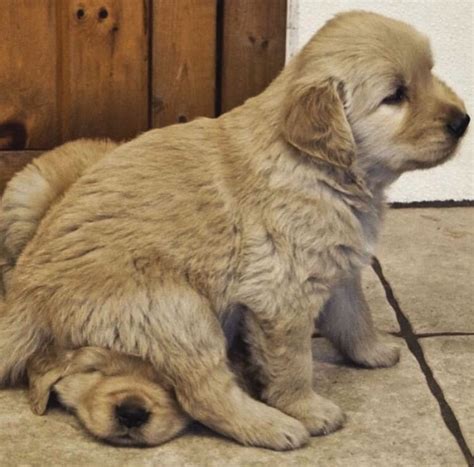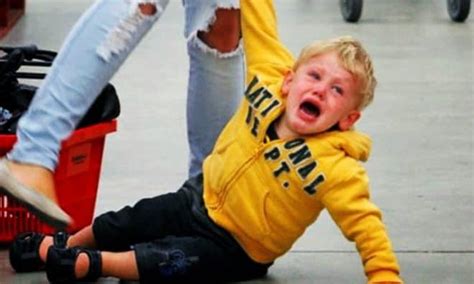
A golden retriever’s unwavering affection for its feline housemate has captivated the internet, showcased in a viral video depicting the dog’s constant need to be near its furry sibling. The heartwarming footage, posted by the pet’s owner, chronicles the dog’s persistent attempts to cuddle, play, and simply be in close proximity to the seemingly less enthusiastic cat.
The video, which has garnered millions of views across various social media platforms, features moments of the golden retriever nudging, pawing, and gently attempting to wrap its paws around the orange tabby cat. While the cat often appears indifferent, tolerating the dog’s advances with a stoic demeanor, the undeniable bond between the two animals is palpable. The owner’s commentary throughout the video adds to the humor and charm, highlighting the dog’s “obsession” with its feline companion.
According to the owner, the golden retriever, named Scout, has been fixated on the cat, Finn, since they were first introduced. “Scout has been obsessed with Finn since day one,” the owner stated in the video’s caption. “He just wants to be his best friend, and Finn… well, Finn tolerates him.” The video compilation showcases various instances of Scout’s unwavering devotion, including attempts to share toys, snuggle during naptime, and even follow Finn around the house.
The popularity of the video underscores the enduring appeal of interspecies animal friendships, tapping into a universal desire for connection and companionship. Viewers have flooded the comments section with messages of support and admiration for the unlikely duo, praising Scout’s unwavering affection and Finn’s patient acceptance. Many have shared their own stories of similar animal pairings, highlighting the unique and often humorous dynamics that can emerge within a multi-pet household.
The video also serves as a reminder of the positive impact animals can have on our lives, providing companionship, comfort, and endless entertainment. The unwavering love and loyalty displayed by Scout towards Finn resonate deeply with viewers, offering a heartwarming glimpse into the simple joys of animal friendship. The owner plans to continue documenting Scout and Finn’s adventures, promising more adorable content in the future. This interspecies love affair proves that friendship knows no boundaries, captivating audiences worldwide with its endearing display of canine devotion.
Interspecies Friendships: A Deeper Look
The bond between Scout and Finn, while seemingly unique, is part of a larger phenomenon of interspecies friendships that have been observed and documented across various animal species. These relationships often defy conventional understanding of animal behavior, challenging the notion that animals are solely driven by instinct and competition.
Several factors contribute to the formation of interspecies friendships. Early socialization plays a crucial role, particularly when animals are raised together from a young age. In these cases, animals may imprint on each other, forming strong bonds that transcend species boundaries. Shared experiences, such as playing, eating, and sleeping together, can also foster a sense of camaraderie and mutual affection.
Furthermore, certain personality traits may predispose animals to forming interspecies friendships. Animals that are naturally curious, playful, and tolerant are more likely to engage with individuals from different species. In Scout’s case, his outgoing and affectionate nature appears to be a key factor in his unwavering devotion to Finn. Finn’s tolerant and patient demeanor, despite his apparent indifference, also contributes to the dynamic between the two animals.
The benefits of interspecies friendships are numerous. For animals living in captivity, these relationships can provide much-needed social interaction and enrichment, reducing boredom and stress. In the wild, interspecies friendships can offer protection from predators, access to food resources, and assistance with raising young. These relationships can also promote cooperation and understanding between different species, contributing to a more harmonious ecosystem.
However, interspecies friendships are not always without their challenges. Differences in communication styles, social behaviors, and dietary needs can sometimes lead to conflict. It is important for owners to carefully monitor interspecies interactions, ensuring that all animals are safe and comfortable. Providing separate spaces and resources can also help to minimize potential conflicts.
The scientific study of interspecies friendships is still in its early stages, but ongoing research is shedding light on the complex social dynamics that underpin these relationships. By studying interspecies interactions, scientists hope to gain a deeper understanding of animal behavior, cognition, and emotion. Ultimately, this knowledge can help us to better appreciate the diversity and complexity of the animal kingdom and promote more compassionate and ethical treatment of all species.
The Science Behind the Cuteness: Why Viral Animal Videos Resonate
The overwhelming popularity of videos like Scout and Finn’s highlights a significant aspect of internet culture: the widespread appeal of “cute” animal content. This phenomenon is rooted in a complex interplay of psychological, neurological, and social factors.
Evolutionarily, our brains are wired to respond positively to neotenous features, those characteristics associated with youthfulness and vulnerability, such as large eyes, round faces, and clumsy movements. These features trigger a nurturing response in humans, activating the reward centers in our brains and releasing dopamine, a neurotransmitter associated with pleasure and motivation. This biological predisposition explains why we find puppies, kittens, and, indeed, golden retrievers so irresistibly cute.
Beyond the biological basis, there are also psychological factors at play. Cute animal videos provide a sense of escapism, offering a temporary respite from the stresses and anxieties of daily life. They evoke positive emotions, such as joy, amusement, and affection, which can improve mood and reduce stress levels. Furthermore, watching cute animal videos can foster a sense of social connection, as people share and discuss their favorite videos with friends and family.
The virality of animal videos is also driven by social media algorithms, which prioritize content that is likely to generate engagement. Cute animal videos are highly shareable, as people are eager to spread joy and amusement to their social networks. This creates a positive feedback loop, where popular videos are seen by even more people, further amplifying their reach and impact.
However, the focus on cuteness can also have negative consequences. The demand for cute animal content can fuel unethical breeding practices, animal exploitation, and the spread of misinformation about animal care. It is important to be mindful of the source and context of animal videos, ensuring that they are not promoting harmful or exploitative practices.
Ultimately, the appeal of cute animal videos reflects a fundamental aspect of human nature: our capacity for empathy and our appreciation for the simple joys of life. By understanding the underlying psychological and social factors that drive this phenomenon, we can better appreciate its benefits while also mitigating its potential risks.
Responsible Pet Ownership: Considerations for Multi-Pet Households
The heartwarming video of Scout and Finn also provides an opportunity to discuss the responsibilities associated with owning multiple pets. While interspecies friendships can be enriching for both animals and humans, it is crucial to create a safe and harmonious environment for all members of the household.
Before introducing a new pet into the home, it is important to carefully consider the compatibility of the animals involved. Factors such as age, breed, personality, and previous experiences can all influence how well animals get along. Researching the specific needs and behaviors of each species is essential for ensuring a successful integration.
The introduction process should be gradual and carefully supervised. Start by allowing the animals to interact through a barrier, such as a crate or baby gate. This allows them to get used to each other’s scent and presence without direct contact. Over time, gradually increase the amount of time they spend together, always under close supervision.
Providing separate resources is also crucial for minimizing potential conflicts. Each animal should have its own food and water bowls, sleeping area, and toys. Avoid forcing animals to share resources, as this can lead to competition and aggression.
It is also important to be aware of the signs of stress and conflict between animals. These may include changes in appetite, sleep patterns, or behavior, as well as hissing, growling, or fighting. If you observe any of these signs, it is important to separate the animals and consult with a veterinarian or certified animal behaviorist.
Training is another essential aspect of responsible pet ownership. Teaching basic obedience commands can help to establish clear boundaries and expectations for all animals in the household. Positive reinforcement techniques, such as rewarding desired behaviors with treats or praise, are generally the most effective approach.
Finally, it is important to remember that every animal is an individual, and there is no guarantee that all animals will get along perfectly. Patience, understanding, and a willingness to adapt are essential for creating a harmonious multi-pet household.
The Broader Impact of Viral Content on Animal Welfare
The viral nature of videos like Scout and Finn’s has a ripple effect that extends beyond mere entertainment, potentially influencing animal welfare in both positive and negative ways. The increased visibility can raise awareness about responsible pet ownership, the importance of animal companionship, and the unique bonds that can form between different species.
On the positive side, these videos can inspire viewers to adopt pets from shelters, donate to animal welfare organizations, and advocate for stronger animal protection laws. They can also promote a more positive perception of certain breeds or species that may be unfairly stigmatized. The attention garnered by Scout and Finn could lead to increased interest in golden retrievers and orange tabby cats, potentially boosting their adoption rates.
However, the viral nature of animal content can also have negative consequences. The increased demand for certain breeds or species can fuel unethical breeding practices, such as puppy mills and backyard breeders, who prioritize profit over animal welfare. These operations often subject animals to inhumane conditions and neglect, leading to serious health and behavioral problems.
Furthermore, the focus on cuteness and entertainment can overshadow the serious responsibilities of pet ownership. Viewers may be inspired to acquire pets without fully understanding the time, effort, and financial resources required to provide proper care. This can lead to neglect, abandonment, and overcrowding in shelters.
The spread of misinformation is another potential concern. Viral videos often lack context and may promote inaccurate or misleading information about animal behavior, training, and care. This can lead to well-intentioned but ultimately harmful practices, such as using aversive training methods or feeding inappropriate diets.
To mitigate these risks, it is important for viewers to critically evaluate the content they consume and to seek out reliable sources of information about animal welfare. Supporting reputable breeders, adopting from shelters, and educating oneself about responsible pet ownership are all essential steps in ensuring that the viral nature of animal content has a positive impact on animal welfare.
Ultimately, the power of viral videos can be harnessed for good, raising awareness, promoting compassion, and driving positive change. However, it is crucial to be mindful of the potential risks and to act responsibly to protect the well-being of animals.
The Future of Interspecies Relationships: A Changing Landscape
As our understanding of animal behavior and cognition continues to evolve, so too does our perception of interspecies relationships. The traditional view of animals as solely driven by instinct and competition is gradually being replaced by a more nuanced understanding of their capacity for empathy, cooperation, and even friendship.
Technological advancements are also playing a role in shaping the future of interspecies relationships. Wearable sensors and artificial intelligence are being used to monitor animal behavior, communication, and emotional states, providing valuable insights into their social interactions. These technologies can also be used to facilitate communication between different species, allowing humans to better understand their needs and preferences.
The rise of virtual reality and augmented reality technologies also holds potential for creating immersive and interactive experiences that promote interspecies understanding and empathy. Virtual reality simulations could allow humans to experience the world from the perspective of another animal, fostering a deeper appreciation for their unique perspectives and challenges.
As human societies become increasingly urbanized, the importance of animal companionship is likely to grow. Pets provide much-needed social support, emotional comfort, and opportunities for physical activity, particularly for individuals living alone or with limited social networks. Interspecies friendships can further enrich the lives of both humans and animals, fostering a sense of connection and belonging.
However, the future of interspecies relationships also faces significant challenges. Habitat loss, climate change, and human exploitation are threatening the survival of many animal species, disrupting ecosystems and undermining the delicate balance of nature. Addressing these challenges requires a global effort to protect biodiversity, promote sustainable practices, and foster a greater respect for the intrinsic value of all living beings.
Ultimately, the future of interspecies relationships depends on our ability to cultivate a more compassionate and interconnected worldview. By recognizing the inherent dignity and worth of all species, we can create a more just and sustainable world for both humans and animals.
Frequently Asked Questions (FAQ)
1. What is the main point of the viral video featuring the golden retriever and the cat?
The video highlights the golden retriever’s overwhelming affection and “obsession” with its feline sibling, showcasing the dog’s constant attempts to cuddle, play, and be near the cat, creating a heartwarming and humorous display of interspecies affection.
2. What are the names of the golden retriever and the cat in the video?
The golden retriever’s name is Scout, and the orange tabby cat’s name is Finn.
3. Why do videos of cute animals, like Scout and Finn, become so popular online?
These videos tap into our innate human response to neotenous features (youthful characteristics), triggering a nurturing instinct and releasing dopamine in the brain, creating feelings of joy and escapism. They’re also highly shareable, fostering social connection and positive feedback loops on social media.
4. What are some of the potential benefits and drawbacks of viral animal videos?
Benefits include raising awareness about responsible pet ownership and promoting animal adoptions. Drawbacks include fueling unethical breeding practices, spreading misinformation about animal care, and potentially leading to impulsive pet acquisitions without proper consideration.
5. What considerations should people keep in mind when introducing a new pet into a household with existing animals?
Consider compatibility (age, breed, personality), introduce them gradually under supervision, provide separate resources (food, water, sleeping areas), be aware of signs of stress or conflict, and utilize positive reinforcement training. Patience and understanding are key.









